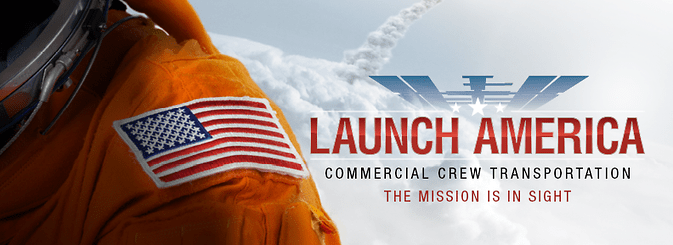Yesterday, NASA made a live announcement about how they planned to work with commercial partners to bring human spaceflight back to the United States. SpaceX and Boeing will work towards completely eliminating our reliance on Russian spacecraft to put astronauts in Orbit by 2017 and free up NASA to work on exciting things—like getting our asses to Mars.
NASA has been funding research in spaceflight at private aerospace companies for years, and that investment is about to finally pay off as they’ve selected Boeing and SpaceX to share the money in their private space taxi contract. Boeing will take the larger share of $4.2 billion with SpaceX taking $2.6 billion to complete their space capsules that will take astronauts to low Earth orbit by 2017.
That’s exciting in itself, because it will reduce and potentially eliminate our dependence on Russian Soyuz capsules and rockets to send astronauts to the ISS, which costs upwards of $70 million per seat. But it’s not just about the money—NASA is certainly shelling out plenty of that to get these private contracts going—it’s about the future. Easier access to the ISS means furthering the scientific research that is done up there and will some day provide us with the data we need to allow human beings to survive in space for long periods of time and do cool things like colonize other planets.
In addition, it allows NASA to turn its focus and resources to those very projects that go beyond just low Earth orbit. NASA adminstrator Charlie Bolden said in the live announcement, “Today we are one step closer to launching our astronauts from U.S. soil on American spacecraft and ending the nation’s sole reliance on Russia by 2017. Turning over low-Earth orbit transportation to private industry will also allow NASA to focus on an even more ambitious mission—sending humans to Mars.”
Both companies will need to pass rigorous safety standards set by NASA before they begin shooting people into space all willy-nilly, but that should be an easy hurdle for both companies to clear. Overall, it’s exciting news in a time when the space program has been struggling with budget cuts, and hearing NASA talk about taking the lead again in space exploration and get to Mars is just the kind of thing we need right now.
(via Space.com, image via NASA)
- Meanwhile, New Horizons is snapping pictures of Pluto’s moons as it approaches
- Spaceship Earth Grants will send lucky civilian winners to space
- ISS astronauts made a call to schoolchildren
Are you following The Mary Sue on Twitter, Facebook, Tumblr, Pinterest, & Google +?








